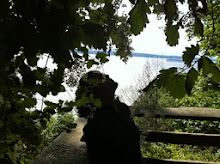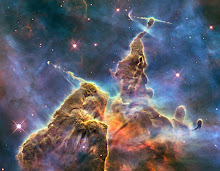
A Lady's Life in the Rocky Mountains by Isabella L. Bird
“I dreamt up of bears so vividly that I woke up with a furry death-hug at my throat, but feeling quite refreshed.”
If ever you want a travel companion or simply someone to sit with and talk about strange far away places then there will be few as highly recommended as Miss Bird. Even the Spectator admitted in 1879, “There never was anybody who had adventures, as well as Miss Bird.” And what adventures they were!
In her solo journey from San Francisco to the Rocky Mountains, Miss Bird details, in her letters to her younger sister, her passage through isolated wilderness teeming with wildlife, pioneer settlers and newly fledging small towns. Her words bring alive a “truly grand” land with some of the most spectacular vistas; “velvety colouring in crimson and violet; such an orange, green, and vermilion sky; such scarlet and emerald clouds…For colour, the Rocky Mountains beat all I have seen!”
But the objective and astute observer that she is, Miss Bird notes the diminishing number of wild bison, land swindles, politicians buying votes, the fact that, ‘Agriculture restores and beautifies, mining destroys and devastates; turning the earth inside out, making it hideous, and blighting every green thing’ and that, ‘An American is nationally assumptive, an Englishman personally so.’
The benefit of hindsight makes some passages seem prophetic:
‘The Americans will never solve the Indian problem till the Indian is extinct.’
‘The "almighty dollar" is the true divinity, and its worship is universal. "Smartness" is the quality thought most of… Smartness is but the initial stage of swindling, and the clever swindler who evades or defies the weak and often corruptly administered laws of the States excites unmeasured admiration among the masses.¹’
“Americans specially love superlatives. The phrases "biggest in the world," "finest in the world," are on all lips.”
It is due to her boundless energy, courage and a dash of daring that she survives getting lost in the snow, learns the art of "being agreeable" to the Chalmers family, gets by even as her ink freezes in sub zero temperatures and even prevails over Mountain Jim, her “dear desperado”. In a journey of nearly a thousand miles in high altitude on horseback, often spending the night in less than comfortable quarters, her rare complaint is that she, in keeping with her station as a lady, has to ride sidesaddle when in town. Or that people may find her “Hawaiian riding dress*” non-feminine.
However Miss Bird’s writing wouldn’t be half as lively if she hadn’t had such an eventful and exciting life, especially when viewed from the distance that nearly two centuries bring. At the age of twenty-three years Miss Bird set off from the shores of Victorian England on a voyage to America and the first taste of freedom. She wasn’t one of the pilgrims. Her journey was a prescription for “nervous debility”, a condition marked by low spirits, depression, insomnia and back pain; common among women of intelligence and high spirits restrained by the iron clamp of docility and convention. Not surprisingly on her subsequent return the symptoms resurfaced.
It was only in 1872 at the age of forty when she sailed to the Antipodes that the sickly clergyman’s daughter got transformed into an intrepid traveler miraculously cured of all nagging ailments. She became the second known white women to scale the Muana Loa, the world’s largest volcano. And traveled to Australia, India, Tibet, Japan, China, Korea, Persia, Kurdistan, Turkey and Baghdad; traveling with the Berbers when she was nearly 70. And wrote some of the greatest travel books ever. And became the first women to enter the Royal Geographical Society. But most importantly she took the circumstances that life sent her way and, being the lady that she was, “found a dream of beauty at which one might look all one's life and sigh.”
*pictured on the cover of the book. In the second edition of the book she added a note and a rough sketch of the costume "in consequence of an erroneous statement in the Times" that had said, "She donned masculine habiliments for greater convenience."
All quoted text in italics is from the book.(Afterthoughts on books: part 13)

















4 comments:
sounds very nice. :-)
I have been wondering about this one too... http://www.hindu.com/lr/2010/02/07/stories/2010020750110300.htm
Isabella Bird did know how to have an adventure and write about it.
Thanks for the link. "Living Jewels from the Indian Jungle" seems like a must buy. 90 rare painting and sketches are reason enough, I think.
Two other wonderful books with lot of amazing art worth a look, at least, are-
Birds: The Art of Ornithology:
http://www.amazon.com/Birds-Art-Ornithology-Jonathan-Elphick/dp/0847827062
Amazing Rare Things: The Art of Natural History in the Age of Discovery:
http://www.amazon.com/Amazing-Rare-Things-Natural-Discovery/dp/0979845629/ref=pd_cp_b_3
thanks anvita,
both sound very beautiful, I must check them out.
DK's the bird feeder handbook is on my desk... and it makes me wish that something like that was written for Indian gardens... maybe you should think about it.
- window siller :-)
Hey that's an excellent thought :) But to realize it I will need to move out of this 'Bombay box' and into or close to a garden :D Maybe someday...
Post a Comment